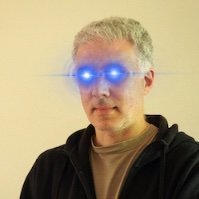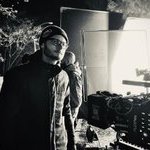-
Posts
567 -
Joined
-
Last visited
Profile Information
-
Occupation
Other
-
Location
Melbourne, Australia
-
Specialties
Photography (mainly portraiture and live theatre).
Contact Methods
-
Website URL
kdghantous.photo
Recent Profile Visitors
-

New Bond film to be directed by Denis Villeneuve
Karim D. Ghantous replied to Stephen Perera's topic in General Discussion
This is promising. I'm expecting good things. 'Arrival' was a really good film. -

Goodbye remjet, hello AHU?!
Karim D. Ghantous replied to Joerg Polzfusz's topic in Film Stocks & Processing
-

Goodbye remjet, hello AHU?!
Karim D. Ghantous replied to Joerg Polzfusz's topic in Film Stocks & Processing
I just had another idea: why not cut out a piece of film with Remjet on it, and stick it to the pressure plate? Quick and dirty, but it might work. -

Goodbye remjet, hello AHU?!
Karim D. Ghantous replied to Joerg Polzfusz's topic in Film Stocks & Processing
Just for fun: quantum stabilised mirrors: https://www.science20.com/news_releases/quantum_stabilized_atom_mirror_the_smoothest_surface_ever_created -

Goodbye remjet, hello AHU?!
Karim D. Ghantous replied to Joerg Polzfusz's topic in Film Stocks & Processing
CineStill is a scam. If it was cheap enough, perhaps it would be ok. But whenever I see people use it, I shake my head. It's anything but the 'Hollywood' look. Maybe a layer of graphite or something like that? Teflon maybe? Ceramic? I'm just thinking aloud. Maybe the surface could be pitted, like a golf ball. Just FYI: https://www.photrio.com/forum/threads/contax-rts-with-ceramic-film-pressure-plate-really.171245/ -

Goodbye remjet, hello AHU?!
Karim D. Ghantous replied to Joerg Polzfusz's topic in Film Stocks & Processing
This is a great idea. People will be able to buy movie film for bulk loaders, for use in SLR cameras, and not worry about where to process it. It could mean that colour photography will be noticeably cheaper. -
I am not a DP, and I don't know if I ever will be one. However, I do know this: cinematography is mainly about light, and how to manage it. It's not literally everything, but it's the foundation. Understand that and everything falls into place. DPs don't ask, "Do I need a China ball?" Or, "Where do I put the China ball?" They ask, "What kind of light do I need here?" One thing I like to do is think about light and exposure wherever possible. Indoors, outdoors, evening, morning, etc. Take light readings with a light meter app on your phone. There are scenes where there is a huge difference between shadow and highlight, even if your eyes tell you otherwise. This podcast is a fun and useful resource: https://wanderingdp.com/category/podcast/ I recommend understanding the film business as a whole, from writing to marketing to producing and all the rest of the circus: https://indiefilmhustle.com/ Cooke Optics: https://cookeoptics.com/shot-on-cooke/tv-interviews/ One of my favourite magazines: https://theasc.com/american-cinematographer The AC's articles section, where you can read selected articles for free: https://theasc.com/american-cinematographer/articles/historical A little tip: negative fill is not talked about a lot, because it's the least sexy thing. The sexiest things are cameras, then lenses, then lights, then reflectors, then negative fill.
-
I won't say too much because this is all still very new. One thing that tech can't replace is the experience of seeing live theatre. A good script, with good actors and decent sound & lighting design is really good stuff. There's a reason why theatre still exists, and it's because people love it. Also, a computer can't enjoy a video game for you. The point is that you play it and enjoy doing so. I'm a photographer and I know that CGI has been replacing photography for decades. Not years - decades. Whatever is in the client's best interest is okay with me. I am not here to rip off clients (I don't have many ATM), and if CGI or AI is better for them, I will say so. So far, I haven't had those conversations. If someone wants a photograph of their 1920s chandelier, or their Ferrari Testarossa, you need a camera for that. Even if photogrammetry is desired, you still need to capture the object. You can't simulate it. Because by definition, photography is about capturing the world, not creating a world.
-

Cine film souped in Rodinal?
Karim D. Ghantous replied to Okto Simaia's topic in Film Stocks & Processing
It turns out that people have indeed tried: https://blog.jimgrey.net/2020/03/30/eastman-double-x-5222-in-rodinal/ https://www.35mmc.com/14/05/2021/rodinal-vs-kodak-d76-vs-d96-which-is-the-best-for-double-x-5222-by-azriel-knight/ -

Christopher Nolan's THE ODYSSEY
Karim D. Ghantous replied to Jeff Bernstein's topic in General Discussion
That's a 'glass half full' kind of attitude! -

Poll/questionnaire: would you pay to use social media?
Karim D. Ghantous posted a topic in Off Topic
This is some very early research I'm doing into building a SM platform. I don't know if I'll have the time, energy or money to do it. But I do have a good idea and I think it can work. My basic premise is that SM should have never been free to use. Same with email. So, would you pay to use Twitter? Instagram? YouTube? Rumble? Etc? And I am talking between US$0.01 and 0.05 to post, and to leave comments on other people's posts. The reason is that it will reduce spam, and it will make people think twice before posting. That reduces the workload on the creator. For example, let's say you had to pay $0.01 for every comment you leave on YouTube. That's very cheap considering that most people don't post more than a couple of comments per day. The bonus for users is that YouTube serves a fraction of the ads that it does now. You might get one ad per video at most. Or perhaps no ads at all if enough people adopt the new model. An alternative scheme would be to introduce a native cryptocurrency. These are given out free to the first million users. And each user can choose to run a low-power validator node on their device, to secure the network, and to earn more coins. Initially the cryptocurrency will have zero value, but as the SM platform gains traction, the coins will be listed on exchanges. So they have an open market price, and so the SM platform has a unique method for users to monetise their accounts. Users can choose to sell the coins, to use them to post, or to stake them to earn more coins. All opinions are welcome. Thank you for reading!





